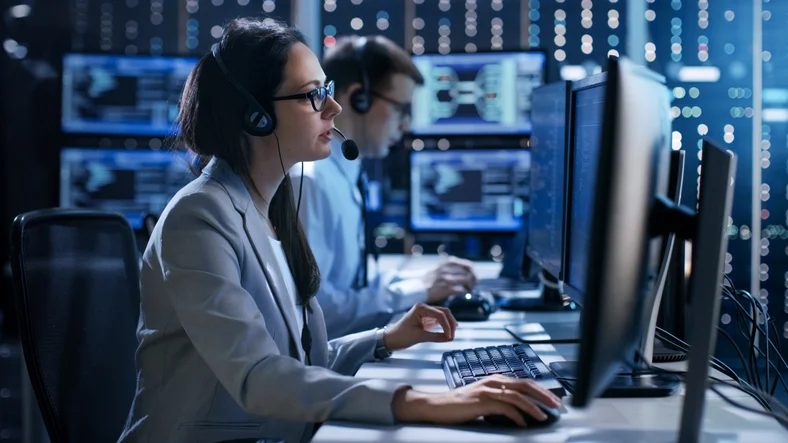Empowering Your Company with Ironclad Corporate Security Steps
Empowering Your Company with Ironclad Corporate Security Steps
Blog Article
From Cybersecurity to Physical Measures: Enhancing Company Safety in a Changing World
In today's rapidly advancing digital landscape, the importance of company safety can not be overstated. As cyber dangers become significantly sophisticated and widespread, companies should exceed typical cybersecurity steps to guard their operations and properties - corporate security. This is where the integration of physical safety measures ends up being essential. By integrating the toughness of both cybersecurity and physical safety and security, business can develop a comprehensive defense approach that addresses the diverse variety of hazards they face. In this discussion, we will discover the altering danger landscape, the demand to incorporate cybersecurity and physical security, the application of multi-factor authentication procedures, the relevance of employee awareness and training, and the adaptation of safety procedures for remote labor forces. By checking out these key areas, we will acquire important insights into exactly how organizations can enhance their business safety in an ever-changing globe.
Recognizing the Changing Hazard Landscape
The progressing nature of the modern-day world demands a detailed understanding of the changing threat landscape for reliable corporate safety and security. It is critical for organizations to remain educated and adapt their protection measures to attend to these advancing threats.
One trick facet of recognizing the transforming danger landscape is identifying the various kinds of hazards that companies deal with. In addition, physical dangers such as burglary, vandalism, and company reconnaissance remain prevalent concerns for organizations.
Surveillance and analyzing the hazard landscape is essential in order to identify prospective dangers and susceptabilities. This includes staying upgraded on the most up to date cybersecurity patterns, evaluating hazard intelligence records, and carrying out routine danger assessments. By understanding the changing risk landscape, companies can proactively implement ideal security steps to reduce risks and secure their assets, credibility, and stakeholders.
Integrating Cybersecurity and Physical Safety
Integrating cybersecurity and physical protection is important for extensive business protection in today's interconnected and digital landscape. As organizations significantly depend on technology and interconnected systems, the boundaries between physical and cyber threats are ending up being blurred. To properly safeguard versus these dangers, an all natural approach that incorporates both cybersecurity and physical safety actions is important.
Cybersecurity focuses on protecting electronic assets, such as data, systems, and networks, from unapproved access, interruption, and burglary. Physical safety and security, on the various other hand, incorporates actions to protect physical properties, individuals, and facilities from risks and susceptabilities. By integrating these 2 domain names, organizations can attend to susceptabilities and hazards from both electronic and physical angles, consequently boosting their general protection posture.
The combination of these two self-controls enables a more extensive understanding of security dangers and makes it possible for a unified reaction to incidents. For instance, physical gain access to controls can be improved by integrating them with cybersecurity procedures, such as two-factor authentication or biometric identification. Likewise, cybersecurity actions can be enhanced by physical protection actions, such as security cameras, alarm systems, and safe and secure accessibility factors.

Applying Multi-Factor Verification Steps
As organizations increasingly focus on detailed security procedures, one effective strategy is the application of multi-factor verification measures. Multi-factor authentication (MFA) is a safety method that needs individuals to give numerous kinds of recognition to access a system or application. This technique includes an additional layer of defense by combining something the user understands, such as a password, with something they have, like a protection or a finger print token.
By applying MFA, organizations can dramatically boost their security pose - corporate security. Traditional password-based verification has its constraints, as passwords can be quickly endangered or failed to remember. MFA minimizes these threats by including an added authentication variable, making it harder for unauthorized individuals to access to sensitive info
There are a number of types of multi-factor verification techniques available, consisting of biometric authentication, SMS-based confirmation codes, and equipment symbols. Organizations require to examine their certain demands and pick the most ideal MFA solution for their demands.
Nonetheless, the execution of MFA must be meticulously prepared and implemented. It is essential to strike a balance in between security and use to prevent customer disappointment and resistance. Organizations must also think about possible compatibility problems and give appropriate training and support to make certain a smooth change.
Enhancing Worker Understanding and Training
To reinforce corporate safety, companies need to prioritize improving employee recognition and training. In today's quickly developing hazard landscape, workers play a vital role in guarding an organization's delicate information and properties. Regrettably, many protection breaches happen due to human error or absence of understanding. Consequently, organizations require to spend in comprehensive training programs to enlighten their employees regarding possible risks and the most effective techniques for reducing them.
Efficient staff member recognition and training programs should cover a variety of topics, consisting of information protection, phishing attacks, social engineering, password health, and physical safety and security actions. These programs need to be tailored to the details requirements and obligations of various worker duties within the company. Normal training simulations, workshops, and sessions can help employees develop the necessary skills and knowledge to react and identify to security threats effectively.
Furthermore, organizations need to motivate a culture of protection recognition and supply continuous updates and reminders to maintain employees educated regarding the most recent threats and reduction techniques. This can be done through inner communication networks, such as e-newsletters, intranet websites, and e-mail campaigns. By fostering a security-conscious labor force, companies can substantially decrease the likelihood of safety events and shield their beneficial possessions from unapproved gain access to or concession.

Adapting Safety And Security Procedures for Remote Labor Force
Adapting company security steps to fit a remote labor force is vital in making sure the protection of delicate information and properties (corporate security). With the increasing trend of remote work, organizations have to execute proper protection actions to mitigate the risks associated with this new way of working
One important element of adapting safety procedures for remote job is establishing safe communication channels. Encrypted messaging platforms and virtual private networks (VPNs) can aid secure delicate info and stop unauthorized access. In addition, companies need to apply using solid passwords and multi-factor verification to improve the safety of remote gain access to.
Another important consideration is the implementation of secure remote accessibility options. This includes offering workers with protected accessibility to company resources and data through digital desktop computer infrastructure (VDI), remote desktop computer procedures (RDP), or cloud-based solutions. These innovations guarantee that sensitive details stays protected while making it possible for workers to perform their functions efficiently.

Last but not least, comprehensive safety and security understanding training is critical for remote employees. Training sessions should cover finest methods for safely accessing and taking care of delicate details, identifying and reporting phishing attempts, and maintaining the overall cybersecurity hygiene.
Conclusion
In conclusion, as the threat landscape continues to develop, it is crucial for This Site organizations to reinforce their protection gauges both in the cyber and physical domains. Incorporating cybersecurity and physical protection, carrying out multi-factor authentication actions, and improving employee understanding and training are essential actions towards attaining robust corporate safety.
In this discussion, we will certainly explore the transforming risk landscape, the demand to incorporate cybersecurity and physical security, the execution of multi-factor authentication actions, the value of employee understanding and training, and the adjustment of safety measures for remote workforces. Cybersecurity actions can be matched by physical protection steps, such as security cameras, alarm systems, and secure gain access to factors.
As organizations progressively focus on extensive safety measures, one efficient technique is the implementation of multi-factor authentication procedures.In verdict, as the risk landscape proceeds to advance, it is essential for organizations link to reinforce their protection measures both in the cyber and physical domains. Incorporating cybersecurity and physical protection, implementing multi-factor authentication procedures, and enhancing employee understanding and training are necessary actions in the direction of achieving robust corporate safety.
Report this page